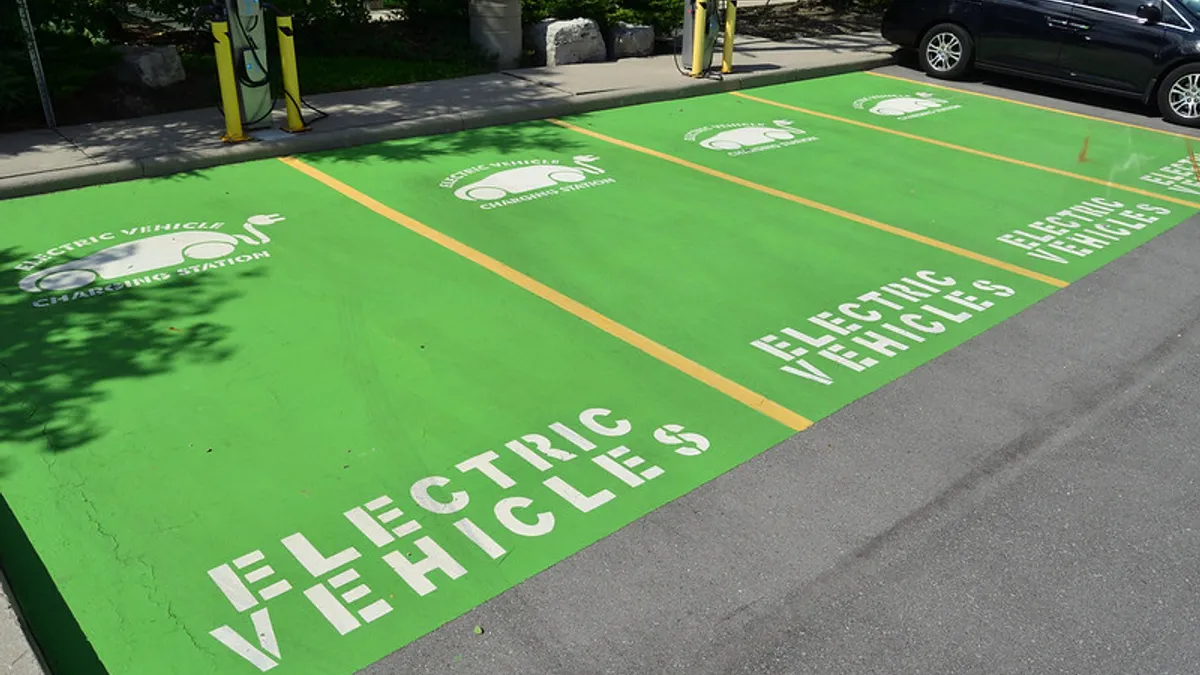Dive Brief:
-
The Biden administration on Tuesday released the U.S. National Blueprint for Transportation Decarbonization. The blueprint lays out strategies for cutting all greenhouse gas emissions from the transportation sector, which currently accounts for a third of all domestic GHG emissions, by 2050.
-
The blueprint has a three-pronged approach: increase convenience and efficiency, and transition to clean options — the last of which federal regulators expect will drive the majority of emissions reductions.
-
This week’s release aligns with the Transportation Research Board’s annual meeting in Washington, D.C. Regulators say more detailed plans will be developed and implemented with state and local governments and private-sector partners. Prior to 2030, the focus will be on research and investment to support deployment. It will shift to scaling up the deployment of “clean solutions” between 2030 and 2040 and completing the transition between 2040 and 2050.
Dive Insight:
The Biden administration in November 2021 published a long-term strategy with a goal of achieving net-zero GHG admissions by 2050 and 50-52% reductions from 2005 levels by 2030. Considering this and other transportation and climate goals, the blueprint seeks to coordinate how to get there between all levels of government and in partnership with the private sector. It comes as estimates show 2022 was another year of rising GHG emissions.
The blueprint document stems from a September memorandum of understanding between the U.S. Environmental Protection Agency and the U.S. Departments of Energy, Transportation, and Housing and Urban Development. It committed the agencies to release a blueprint that could help guide future policy decisions, along with research and deployment in public and private sector work. Both the MOU and the subsequent blueprint note billions of dollars in clean transportation investments in the recent Inflation Reduction Act and 2021’s infrastructure law.
The blueprint acknowledges changing mobility needs and the emergence of automation and connectivity, which the document says “will dramatically change future mobility in ways that are hard to forecast.” Regulators concluded that “transportation systems need to be flexible enough to accommodate unforeseen new technology and societal changes that will cause mobility shifts.” The blueprint also addressed micromobility, noting safe infrastructure for shared scooters and e-bikes as a potential area for financing.
As for changes in planning and design, the blueprint highlighted several focuses, including equitable transit-oriented development, local zoning reform, and supporting safe active transportation.
Broadly, examples of approaches that the agencies outlined for this decade include:
- Partner with local communities on local or regional land use and planning to enable fewer or shorter trips.
- Provide tools for system-level design solutions to increase convenience and reduce emissions.
- Work with public and private sector partners on solutions for a more equitable and healthier transportation system, including support for transit-oriented development.
- Support land use, street design, and development policies that make walking and biking easier, safer, and more convenient.
- Invest in rail, public transportation, and active transportation infrastructure to provide the option to use more affordable and energy-efficient forms of transportation.
- Continue and expand funding and market incentives to accelerate the uptake of low- or zero-emission vehicles and invest in supporting infrastructure (e.g., vehicle rebates and EV charging infrastructure), especially in low-income and overburdened communities.















